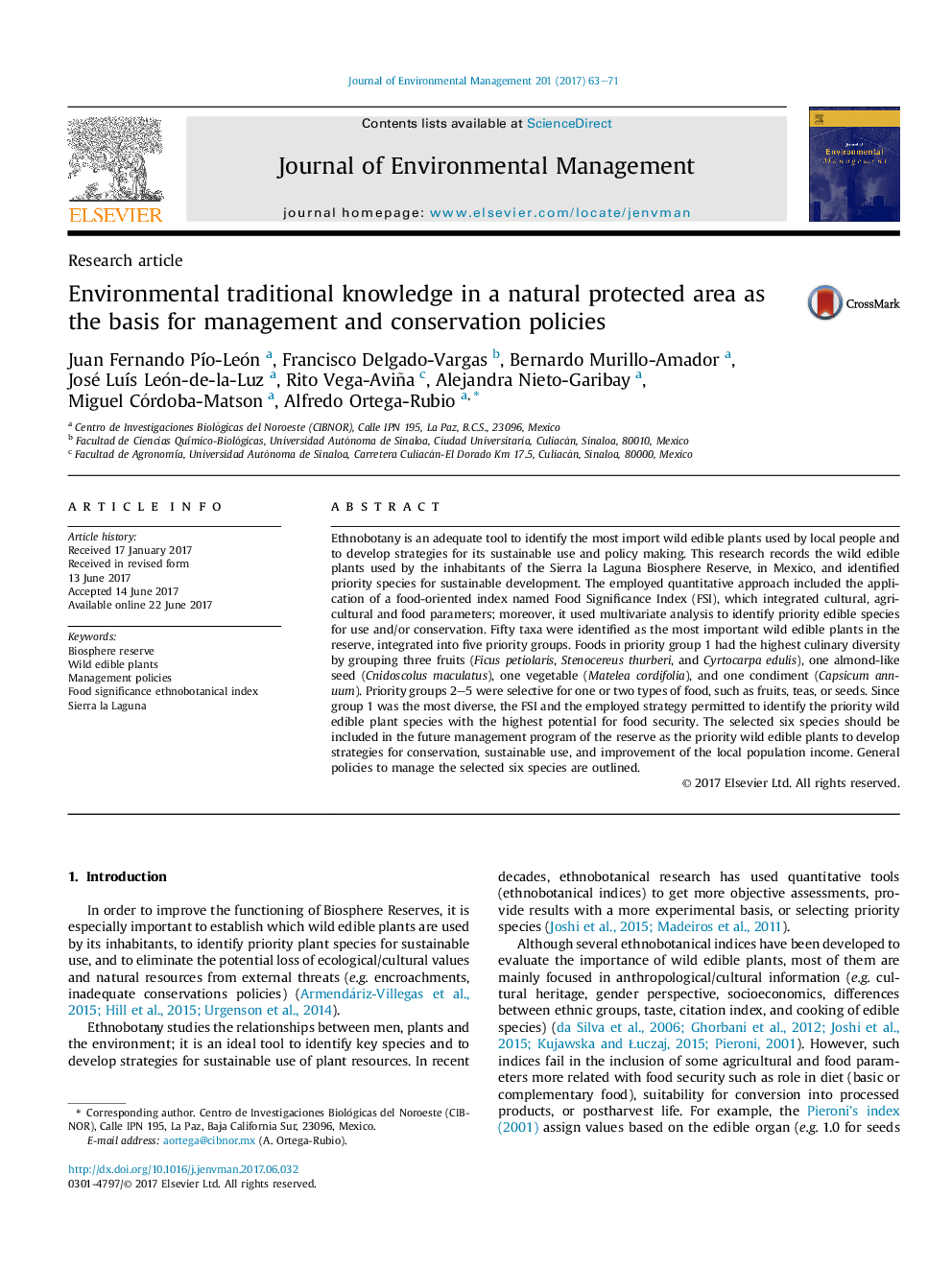| کد مقاله | کد نشریه | سال انتشار | مقاله انگلیسی | نسخه تمام متن |
|---|---|---|---|---|
| 5116560 | 1485216 | 2017 | 9 صفحه PDF | دانلود رایگان |
- Wild edible plants used by the inhabitants of a Biosphere Reserve are recorded.
- A quantitative approach included the application of a new food-oriented index.
- Fifty taxa were identified as the most important wild edible plants in the reserve.
- Six species were identified as the priority wild edible plants for management.
- General policies to manage the selected six species are outlined.
Ethnobotany is an adequate tool to identify the most import wild edible plants used by local people and to develop strategies for its sustainable use and policy making. This research records the wild edible plants used by the inhabitants of the Sierra la Laguna Biosphere Reserve, in Mexico, and identified priority species for sustainable development. The employed quantitative approach included the application of a food-oriented index named Food Significance Index (FSI), which integrated cultural, agricultural and food parameters; moreover, it used multivariate analysis to identify priority edible species for use and/or conservation. Fifty taxa were identified as the most important wild edible plants in the reserve, integrated into five priority groups. Foods in priority group 1 had the highest culinary diversity by grouping three fruits (Ficus petiolaris, Stenocereus thurberi, and Cyrtocarpa edulis), one almond-like seed (Cnidoscolus maculatus), one vegetable (Matelea cordifolia), and one condiment (Capsicum annuum). Priority groups 2-5 were selective for one or two types of food, such as fruits, teas, or seeds. Since group 1 was the most diverse, the FSI and the employed strategy permitted to identify the priority wild edible plant species with the highest potential for food security. The selected six species should be included in the future management program of the reserve as the priority wild edible plants to develop strategies for conservation, sustainable use, and improvement of the local population income. General policies to manage the selected six species are outlined.
Journal: Journal of Environmental Management - Volume 201, 1 October 2017, Pages 63-71
